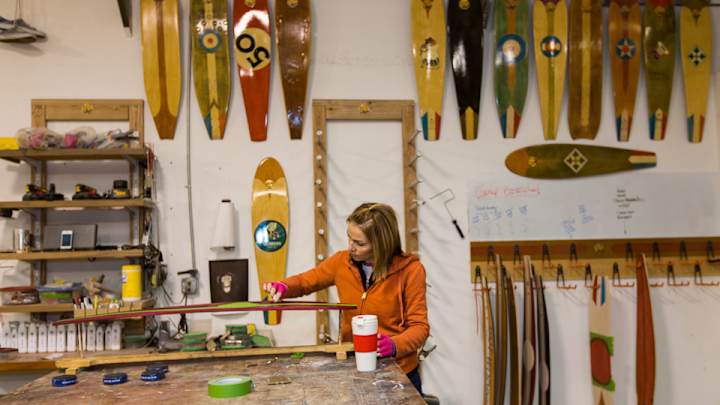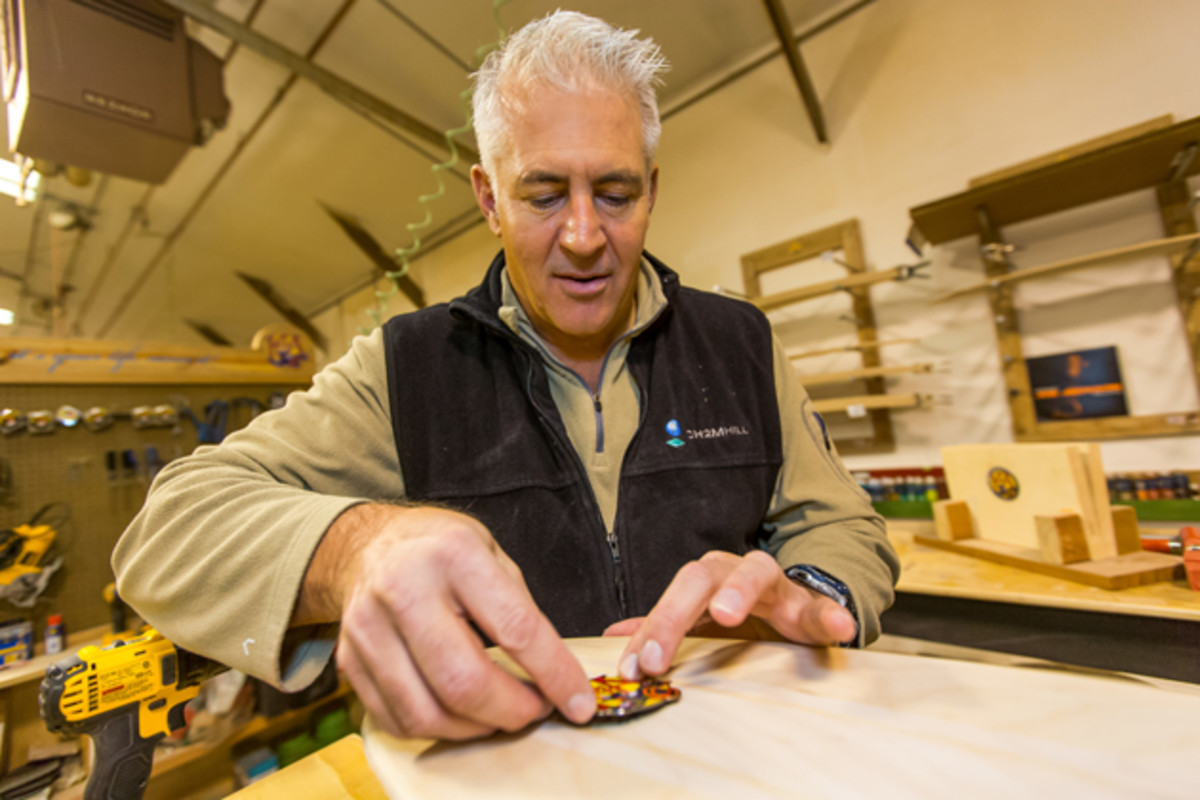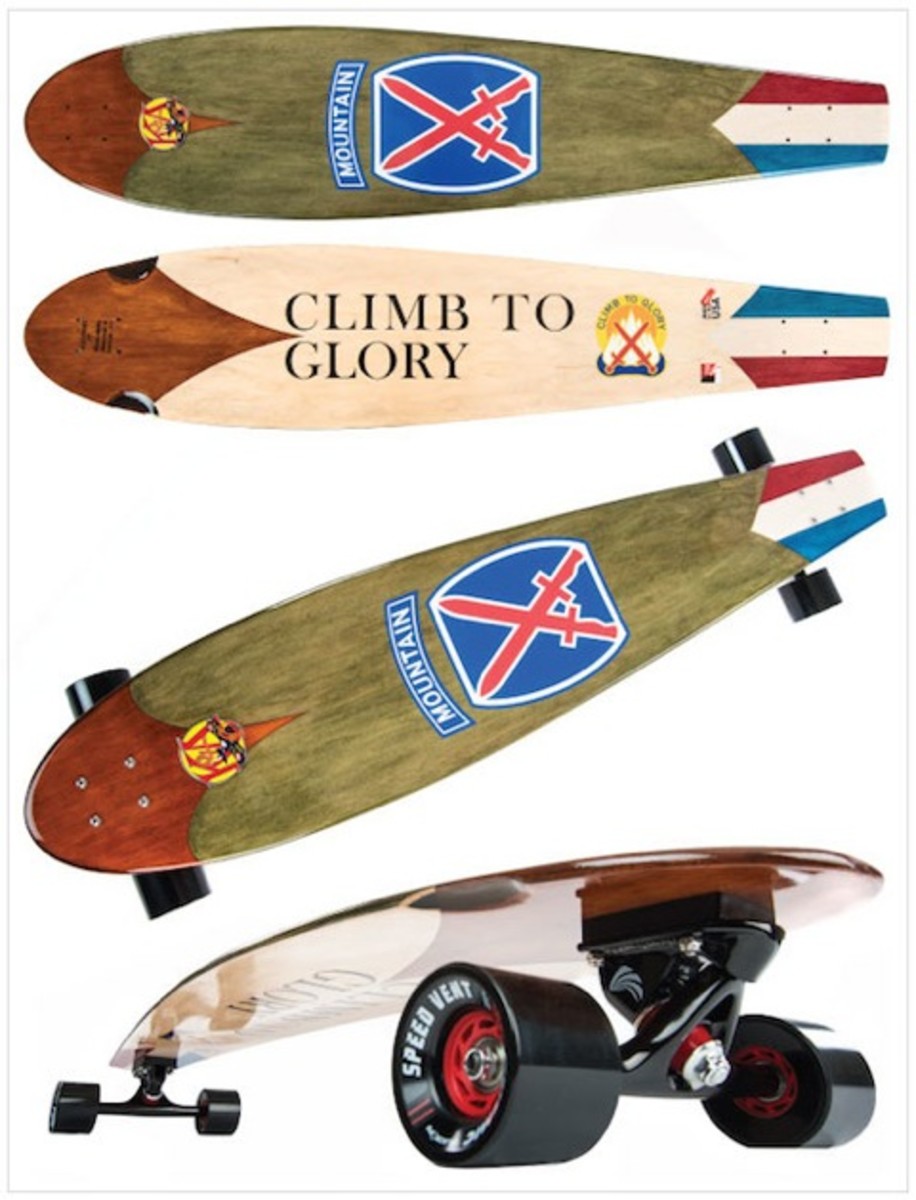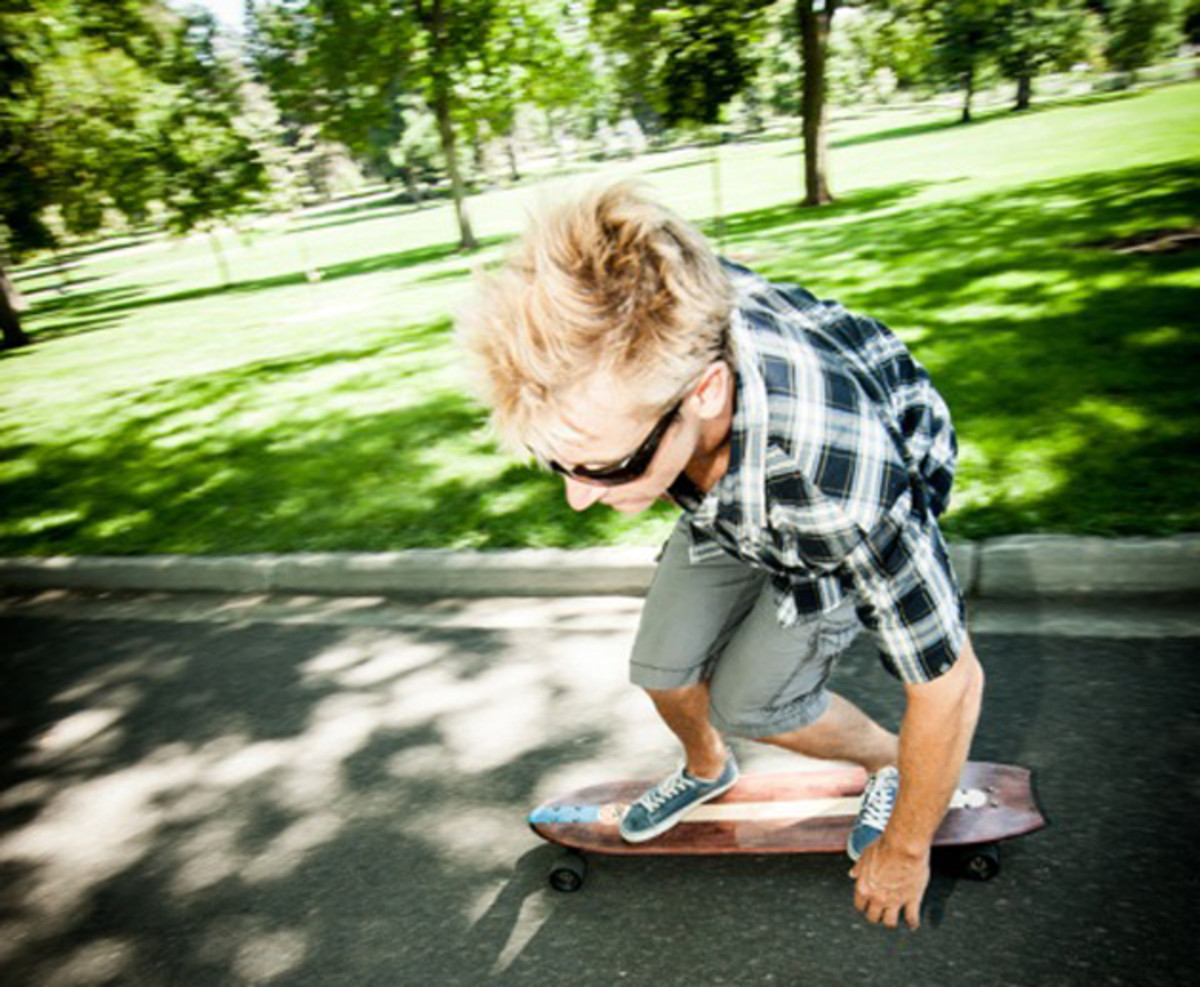Tech Talk: KOTA adds new technology to the longboard skateboard

Sure, Mike Maloney thought longboarding looked like a good time. But the former Navy F-14 Tomcat fighter pilot also had the same thought as everyone else in his target demographic of 30 to 60 years old: “If I got on that I would kill myself."
MORE EDGE: Shape of Success: The artist behind JS Surfboards
Even after plenty of mishaps while skiing, a broken collarbone from mountain biking and more rough rewards from road biking and other adventures, Maloney—CEO of KOTALongboards in Denver—started looking at what characteristics about a longboard was keeping him (and others his age) from riding. What could get him to try something that looked so fun, yet was so risky?

What is it?
Starting in 2012, Maloney took his engineering background and paired it with his aviation love—KOTA stands for Knights of the Air, a nod to U.S. fighter history—to craft a longboard in seven-ply Wisconsin hard maple that appealed to riders who picked their activity with a little more care. “I wanted to engineer a board where the rider could be comfortably in control of the board.”
Tech Talk: How the NHL is using Catapult technology to reduce injuries
How does it work?
Maloney came up with two concepts to improve performance: a tuned camber system and a new clear grip finish, both firsts for a longboard.
A camber—a slight upward curve to the board deck that flattens when the rider climbs on—mimics that of a high-performance downhill ski. Or an 18-wheeler’s flatbed, for that matter. “It will flatten out instead of sagging,” Maloney says. “It acts as a shock absorber for the load you have put on it and strengthens it.”
Stepping on the camber puts tension and compression on the board, allowing you to turn more aggressively. Also, the camber provides spring that allows you to “reverse turn and traverse the slope without accelerating beyond what you can control.”

“You have to be able to perform very agile, tight curving to control the speed on whatever hill you are going down,” Maloney says.
At the same time, Maloney wanted to focus on a “sophisticated” aesthetic, not a board covered in black grip tape or sprays with pores that will eventually wear out or fill with dirt. So he worked with partners to create a chemically derived nonporous grip finish.
After finding a base product in the marketplace, he worked to modify it to make it more durable than the spar varnish he’d known in the Navy. The synthetic urethane base has flexibility so it doesn’t crack with the flex in the board, but still has the grip aspect Maloney was looking for. He now has the first clear nonporous grip in the industry.
7 yoga poses to do while stand up paddleboarding
Why’s it significant?
Maloney claims KOTA Longboards is the first to fully engineer its camber, tuned to specific types of riding. Like a F-14 fighter wing that balances stability and maneuverability, with his take on tension the KOTA boards balance a specific nose shape to improve maneuverability, a wider back truck for stability and a camber that allows for the tension needed to create a safer, more in-control ride.
What are the implications in the world of action sports?
The newest action sports often start with a focus on the youth, but as companies such as KOTA look to attract older demographics, new technologies are emerging. The grip varnish, for example, was created so Maloney could move the primary art surface to the top of the board to appeal to a broader range of consumers. “It becomes an expression of personal style,” he says. With each board slightly different based on KOTA highlight the specific grain of wood in each board, Maloney can put a focus on style because of the advanced technology.
Tech Talk: The North Face brings fusion to fabrics
What are the downsides?
While it may be an upside that KOTA doesn’t compete with the major longboard players shooting for the age 9 to 24 demographic, he competes for dollars a different way. The folks coming to KOTA would otherwise buy hiking boots, standup paddleboards, a GoPro or other adventure items. He has to prove to them that he can make longboarding a controllable scenario.
Who’s using it already?
Due to the military themes found in KOTA designs—Maloney calls his aesthetic “timeless vintage”—he’s found a niche in veterans. But his older demographic has embraced the control of the boards too.

What’s the future of it going forward?
Already KOTA has developed a deck that eliminates the truck holes in the board, which is the next step to improving the board deck’s aesthetic. “It is truly cosmetic,” he says, “it just has to do with the grain and we were determined to find a way to eliminate (the holes).” KOTA expects to have the boards available as an option by early summer and then start fully transitioning to the hole-less method by summer 2016, an aesthetically pleasing way to not "kill yourself" on a longboard.
Tim Newcomb covers stadiums, design and gear for Sports Illustrated. Follow him on Twitter at @tdnewcomb.
